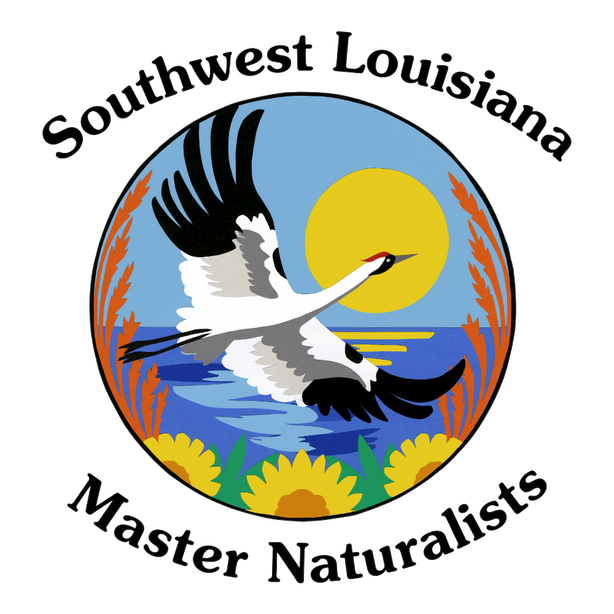|
Most Louisianans are probably at least familiar with the term “Louisiana iris,” though fewer may be familiar with the five species of Louisiana irises, four of which grow wild in our state. Any naturalist in Louisiana ought to become familiar with our state wildflower Iris giganticaerulea and its close relatives (I. fulva, I. nelsonii, I. brevicaulis, and I. hexagona).
Louisiana irises, considered by many to be any of the five species in the series Hexagonae within the genus Iris, can hybridize and produce fertile offspring and are native various portions to the eastern and central United States. Louisiana irises and their hybrids are extremely popular among gardeners in the US and abroad. Their ability to grow both in water gardens and conventional garden beds and wide variety of colors have contributed to their popularity. In South Louisiana, Louisiana irises begin growth with the arrival of cooler temperatures in the fall. Their upright green leaves provide a nice splash of color in the dead of winter. Around mid-March, flower stalks begin to rise and Louisiana irises bloom from mid-March through April and May, depending on the species and variety. In a study of I. fulva and I. brevicaulis (and their hybrids), the most numerous pollinators included American bumblebees (Bombus pennsylvanicus) and Ruby-throated Hummingbirds (Archilochus colubris).2 In Louisiana’s marshes, the large, early flowers of Louisiana irises can be an important nectar and pollen source for these large pollinators. Iris giganticaerulea, as you may deduce from its scientific name, is also called the giant blue iris.3 This is Louisiana’s state wildflower and likely the most common iris you might find in the freshwater marshes and swamps along Louisiana’s gulf coast. It’s the largest Louisiana iris and produces flowers 5 inches across and anywhere from 4 to 6 feet tall.4 This species is only found along the gulf coast of Texas, Louisiana, and possibly Mississippi. The giant blue iris is considered globally vulnerable (G3), though it can be abundant locally. Iris fulva, the copper iris, is a much smaller Louisiana iris and naturally has rusty red flowers.3 This iris usually has flowers 3–4 inches across and about 3 feet tall. The copper iris grows predominantly within the Mississippi River drainage up to Kentucky, Ilinois, and Ohio down to Louisiana and Mississippi. It has contributed red color and cold tolerance to many Louisiana iris hybrids produced by breeders. Iris brevicaulis, the zig zag iris, is the smallest Louisiana iris.3 Unlike the other Louisiana irises, you won’t find it in swampy or marshy areas. The zig zag iris naturally grows in uplands along the Gulf Coast up to Missouri, Kentucky, Ohio, and Illinois, and is even found in Ontario though it’s endangered there. The zig zag iris has been used extensively in hybridization to impart cold tolerance and its unique zig zag form. The Abbeville red iris, Iris nelsonii, was a sensation among Louisiana iris enthusiasts in 1938.3 Fittingly, this swamp dwelling, tall red iris was sometimes called the “Super Fulva.” This iris has more intensely red flowers than I. fulva and the flowers are about 5 inches across and 3-4 feet tall. As in the name, the Abbeville red iris can only be found naturally in the Abbeville area. Research over the years has shown that I. nelsonii is a species of hybrid origin withgenetic traces of I. giganticaerulea, I. fulva, and I. brevicaulis. Since all natural stands of I. nelsonii are on private lands, a protected colony has been established at Palmetto Island State Park in Abbeville by the Louisiana Department of Wildlife and Fisheries. It is considered imperiled (S1) in Louisiana.5 The fifth Louisiana iris (Iris hexagona, the Dixie iris) doesn’t naturally occur in Louisiana, but it does occur in Mississippi, Alabama, Georgia, South Carolina, and Florida.3 This species is somewhat similar to the giant blue iris. Its flowers are generally white, light blue, or blue and about 4.5 inches across and about 4 feet tall. Louisiana irises are, and should be, considered one of Louisiana’s native charismatic species, though their identity has become a bit muddied with the prevalence of hybrids in the nursery trade (and the confusion of calling the invasive Iris pseudacorus a Louisiana iris when it is not). With the unfortunate trifecta of coastal marsh subsidence, saltwater intrusion, and hurricanes, Iris giganticaerulea is now hard to find in the coastal marshes where it once was common. The disappearance of these and many other unique forms of wild Louisiana irises led to Charles Perilloux and the Greater New Orleans Iris Society to create the Louisiana Iris Species Preservation Project.6 This project’s goal is to preserve the genetic diversity of the five Louisiana iris species. This and other projects such as the “A Louisiana Pond” project7 are working grow unique irises, promote them among the public, and eventually reintroduce irises to protected habitats within their native ranges. To ensure that future generations also grow up around our state wildflower, master naturalists across Louisiana can use their collective voices to advocate for the wetland habitats that Louisiana irises need, grow species irises, volunteer in iris rescue projects, and volunteer at wetland restoration projects. References
Musacchia, Joe. 2015. Understanding Louisiana iris, part 1: Iris giganticaerulea. World of Irises: Blog of The American Iris Society. https://theamericanirissociety.blogspot.com/2015/03/understanding-louisiana-iris-part-1-i.html. Musacchia, Joe. 2015. Understanding Louisiana iris, part 2: Iris fulva. World of Irises: Blog of The American Iris Society. https://theamericanirissociety.blogspot.com/2015/06/understanding-louisiana-iris-part-2-i.html. Musacchia, Joe. 2015. Understanding Louisiana iris, part 3: Iris brevicaulis. World of Irises: Blog of The American Iris Society. https://theamericanirissociety.blogspot.com/2015/08/understanding-louisiana-iris-part-3.html. Musacchia, Joe. 2015. Understanding Louisiana iris, part 4: Iris nelsonii. World of Irises: Blog of The American Iris Society. https://theamericanirissociety.blogspot.com/2015/10/understanding-louisiana-iris-part-4-i.html. Musacchia, Joe. 2015. Understanding Louisiana iris, part 5: applying what we learned to modern cultivars. World of Irises: Blog of The American Iris Society. https://theamericanirissociety.blogspot.com/2015/12/understanding-louisiana-iris-part-5.html.
0 Comments
|
SWLA Master Naturalists talksArchives
April 2017
Categories |
 RSS Feed
RSS Feed

